I remember stumbling across my first two-sentence horror story late one night while scrolling through social media – something about a child’s imaginary friend talking back – and I couldn’t sleep for hours afterward. That’s the power of these tiny terrors: they burrow into your mind with pinpoint accuracy, leaving you questioning every shadow and sound.
According to THGMWriters, two sentence horror stories have exploded in popularity across platforms like Reddit’s r/twosentencehorror, where thousands of writers compete daily to craft the perfect micro-nightmare. These stories represent the ultimate writing challenge. You have exactly two sentences to establish normalcy, shatter expectations, and leave readers genuinely unsettled. No room for elaborate world-building or character development – just pure, concentrated fear delivered with laser focus.

I’ve collected 25 of the scariest two-sentence stories I could find, breaking down what makes them work and how you can apply these techniques to your own writing. Whether you’re a seasoned horror writer or someone who’s never crafted a scary story, you’ll walk away with concrete tools for creating nightmares in miniature.
Here’s the thing about good horror writing – it shares many principles with other short story examples that demonstrate powerful narrative techniques in condensed formats.
Table of Contents
-
What Makes a Two-Sentence Horror Story Actually Scary
-
25 Stories That’ll Make Your Skin Crawl (Six Categories)
-
Kids Being Creepy
-
When Technology Goes Wrong
-
Death and What Comes After
-
Something’s in Your House
-
When You Can’t Trust Yourself
-
Alone and Going Crazy
-
-
Why These Stories Actually Work
-
How to Tell if Your Horror Story is Any Good
-
Tips for Writing Your Own Nightmare Fuel
-
Where to Share Your Stories for Maximum Impact
-
How Nairrate Can Help You Write Better Horror
TL;DR
-
Two-sentence horror works because it hits fast and hard, creating complete stories that mess with your expectations
-
The best stories tap into fears we all share – death, being alone, losing control, and having our safe spaces violated
-
Good micro-horror starts normal in sentence one, then drops a bomb in sentence two
-
Every single word has to pull double duty – setting up character, place, problem, and solution all at once
-
Different types of horror (creepy kids, evil tech, death stuff) need different approaches
-
Where you post matters – Reddit loves original ideas that get people talking, while literary magazines want artistic stuff
-
Advanced tricks include playing with time, using what our brains do naturally, and mapping emotional reactions
-
AI tools like Nairrate can help you brainstorm opening lines, find unexpected twists, and pick the perfect words
What Makes a Two-Sentence Horror Story Actually Scary
Creating horror in just two sentences is like performing surgery with a butter knife – you need incredible precision. You can’t rely on slowly building tension or painting spooky scenes. The fear has to hit instantly and stick around long after you’ve finished reading.
Two-sentence horror works because it catches you completely off-guard. You’re casually scrolling through content, maybe sipping coffee, when suddenly your brain processes something deeply disturbing. That jarring shift from “just browsing” to “holy crap” is what creates lasting impact.
Understanding what separates the stories that make you sleep with the lights on from the ones you forget in five minutes comes down to six things: hitting you right in the feelings immediately, telling a complete story despite being tiny, finding the sweet spot between clear and mysterious, tapping into fears we all have, making every word count, and completely flipping your expectations.
|
Element |
What It Does |
Example from Our Collection |
|---|---|---|
|
Setup Sentence |
Makes everything seem normal |
“My daughter always talks to her imaginary friend…” |
|
Reveal Sentence |
Flips everything upside down |
“Last night, I heard her friend talking back.” |
|
Word Efficiency |
Each word does multiple jobs |
“Prison hands” = criminal past + scary appearance + threat |
|
Universal Fears |
Hits fears we all share |
Protecting kids, home invasion, losing your identity |
|
Strategic Mystery |
Lets your imagination run wild |
What exactly IS the “friend”? |
|
Time Tricks |
Uses impossible timing |
“The playground was demolished fifteen years ago.” |
The Lightning Strike Effect
Great two-sentence horror doesn’t ask you to wait around. It delivers its punch within seconds of reading, creating an instant gut reaction that bypasses your logical brain entirely. Unlike longer horror stories that slowly build dread, these micro-stories have to trigger immediate fear responses.
Think about this story: “I found my childhood teddy bear in the attic, exactly where I left it thirty years ago. It was still warm.” The first sentence hits you with nostalgia – we all have childhood stuff packed away somewhere. But “still warm” is impossible and immediately creepy, suggesting either something supernatural is going on or someone’s been messing with your stuff. That impossibility creates instant unease that sticks with you.
Complete Stories in Miniature
Despite being incredibly short, effective two sentence horror tells complete stories. The first sentence usually sets up something normal – a kid talking to an imaginary friend, someone checking security footage, a parent tucking their child into bed. The second sentence reveals the horrifying truth that changes everything you thought you knew.
This completeness satisfies something deep in our brains. We crave stories with a beginning, middle, and end, even in micro-fiction. The best pieces give you that satisfaction while also making your skin crawl.
The Sweet Spot Between Clear and Mysterious
The best two-sentence horror walks a tightrope between being too obvious and too vague. Too explicit, and you rob readers of the imagination that makes fear worse. Too mysterious, and the horror doesn’t land at all. The sweet spot gives you enough concrete details to anchor the fear while leaving the really scary stuff to your imagination.
Your brain is often way more terrifying than anything a writer could describe. The best stories give you just enough information to start filling in horrifying details, then let your mind go absolutely wild with possibilities.
Hitting Universal Fears
The most memorable pieces tap into fears that exist in every human: death, isolation, loss of control, betrayal of trust, having your safe spaces violated. These fears transcend cultural boundaries, making stories that activate them work for everyone.
Stories about creepy kids work because they violate our protective instincts. Home invasion horror succeeds because it destroys our most basic sense of safety. Technology-based fears hit hard because we’re increasingly dependent on systems we don’t really understand or control.
25 Stories That’ll Make Your Skin Crawl
I’ve organized these 25 carefully selected stories into six categories, each targeting specific fears and anxieties. From innocent childhood moments turned sinister to technology behaving in ways that’ll make you want to throw your phone in a drawer, these stories show just how much terror you can pack into a few dozen words.
Kids Being Creepy
These five stories mess with our protective instincts toward children and our nostalgia for childhood safety. They transform innocent scenarios into sources of dread through supernatural presence, impossible timing, and violation of family security. Fair warning – if you’re a parent, these might hit extra hard.
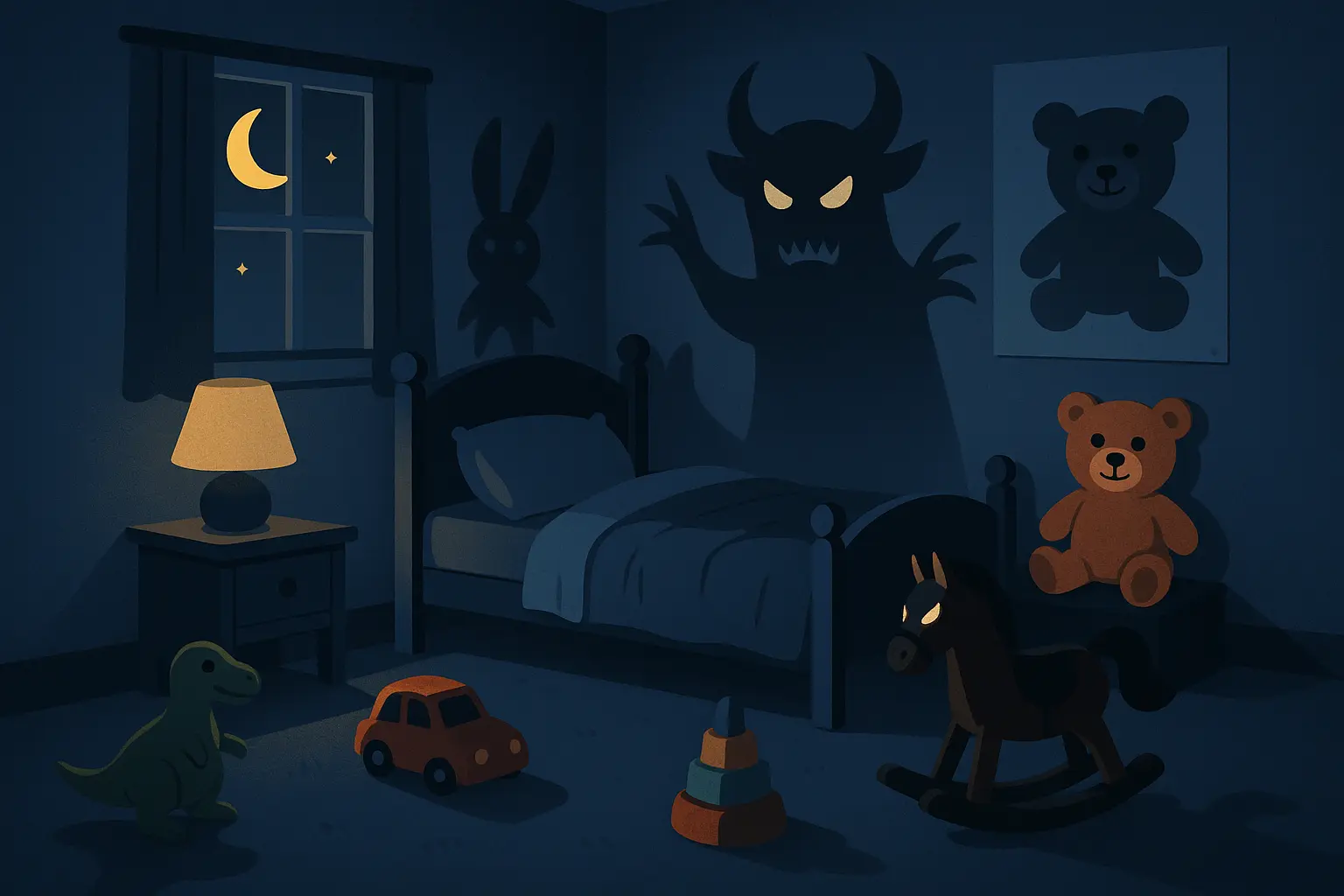
1. The Imaginary Friend’s Response
“My daughter always talks to her imaginary friend in her room every night before bed. Last night, I heard her friend talking back.”
This one taps into every parent’s worst nightmare – their child being in danger from something unknown. The first sentence is completely normal (kids have imaginary friends all the time), while the second introduces something impossible that suggests either supernatural presence or that the “imaginary” friend was never imaginary at all. Trust me, this one will make you listen extra carefully at bedtime.
2. The Demolished Playground
“The children’s laughter from the playground next door always made me smile during my evening walks. The playground was demolished fifteen years ago.”
Playing with time always messes with our heads. Children’s laughter should bring joy, but when it’s coming from nowhere, it becomes genuinely terrifying. The fifteen-year gap forces you to confront either ghostly presence or complete psychological breakdown in the narrator. Either way, not great.
3. The Watching Man
“My son drew a picture of our family, but included an extra figure I didn’t recognize. When I asked who it was, he said, ‘The man who watches us sleep.'”
Innocent childhood art becomes evidence of something horrifying. The extra figure represents violation of family privacy and safety. What makes this extra creepy is the child’s matter-of-fact explanation, suggesting this surveillance has become routine and normalized. How long has this been going on?
4. The Warm Teddy Bear
“I found my childhood teddy bear in the attic, exactly where I left it thirty years ago. It was still warm.”
This one still gives me goosebumps. It takes nostalgic comfort objects and turns them into sources of dread. The impossibility of warmth after decades suggests either supernatural animation or recent handling by unknown parties. The childhood connection makes the violation feel deeply personal.
5. The Persistent Music Box
“The music box in my daughter’s room plays the same lullaby every night at 3 AM. We threw it away last month.”
Horror through impossible persistence. Music boxes are associated with childhood comfort and bedtime routines, but when they operate on their own, they become menacing. The disposal detail adds impossibility, suggesting supernatural forces or that the narrator’s grip on reality is slipping.
When Technology Goes Wrong
Four stories that exploit our anxieties about privacy, surveillance, and digital dependence. In our age of smart homes and always-listening devices, these transform helpful technology into sources of violation and dread through impossible behavior and sinister implications.
6. The Sleeping Photos
“My phone’s camera roll shows photos I never took, all of me sleeping. I live alone.”
You know that feeling when your phone does something weird? This story takes that anxiety and cranks it to eleven. The violation of personal space through technology represents our contemporary fears about digital privacy. The sleeping photos suggest extended, repeated violations during the narrator’s most vulnerable moments. Sweet dreams!
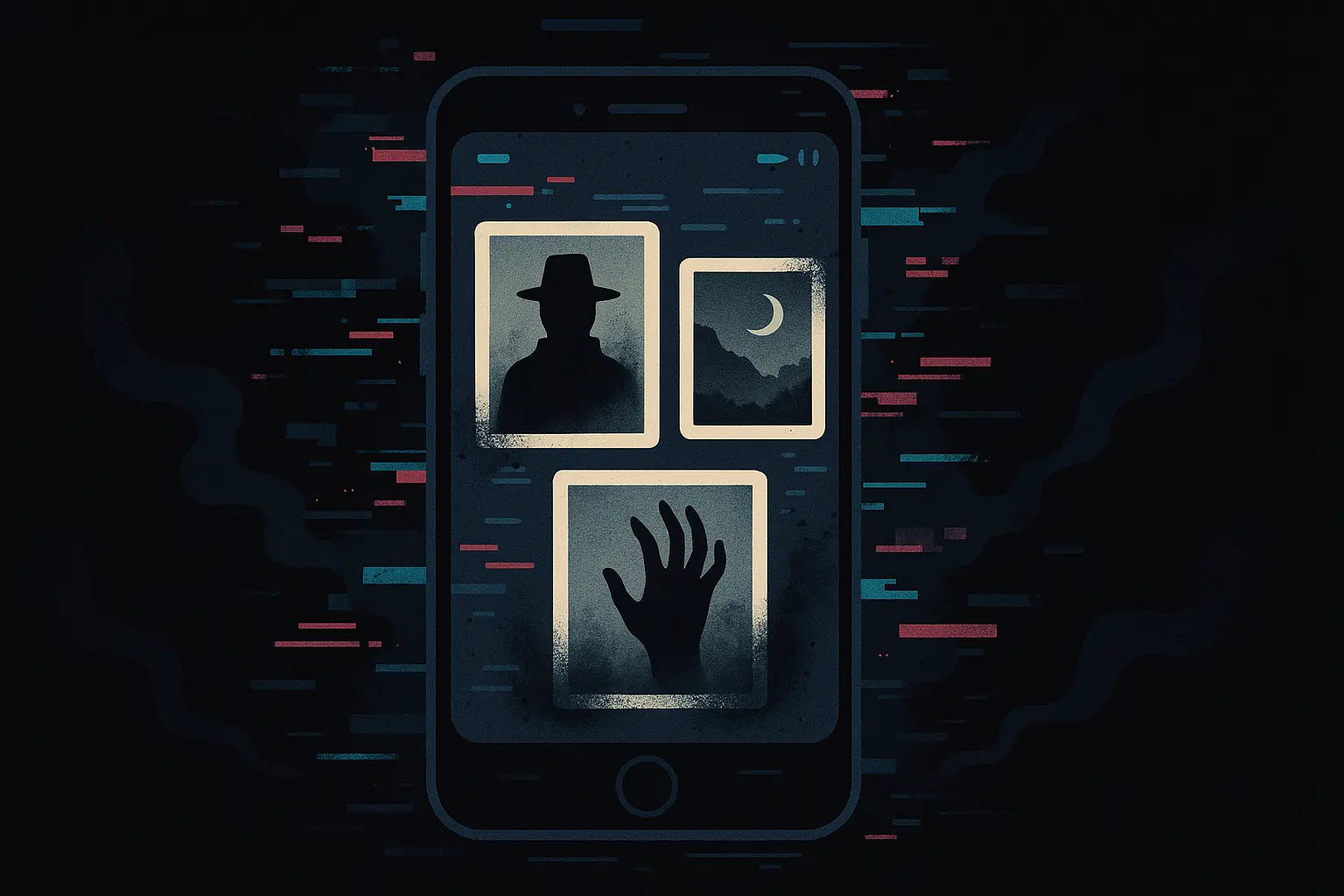
7. The Prophetic GPS
“The GPS kept saying ‘turn around when possible’ even though I was driving straight home. When I finally looked in my rearview mirror, I understood why.”
Familiar technology behaving incorrectly creates immediate unease. Your imagination fills in what’s in that mirror – a pursuer, something supernatural, or a horrifying realization about the driver’s condition. Technology becomes prophetic rather than helpful, which is deeply unsettling.
8. The Eavesdropping Assistant
“My smart home assistant started responding to conversations I wasn’t having. Today it said, ‘I’ll tell them you said no.'”
This transforms helpful AI into something sinister through unexplained conversations. The implication of communication with unseen entities suggests either supernatural presence or conspiracy. The response implies the narrator is being discussed by unknown parties with bad intentions. Alexa, delete everything.
9. The Impossible Video Call
“The video call with my grandmother went perfectly, just like old times. She’s been dead for three years.”
Video calls represent modern family intimacy, making their violation through death particularly jarring. The normalcy of the conversation suggests either supernatural communication or complete psychological breakdown. The comfort of family connection becomes a source of existential horror.
Death and What Comes After
Four stories exploring mortality, the afterlife, and that weird space between life and death. These create existential horror through medical impossibilities, premature burial, prophetic death notices, and attending your own funeral. If you’re already having an existential crisis, maybe skip this section.
10. The Three-Day Death
“I woke up in a hospital bed with no memory of how I got there. The doctor said I’d been dead for three days.”
Existential horror through impossible survival. The three-day death period suggests the narrator experienced actual death, raising questions about their current state and what they experienced during those missing days. Medical authority makes the claim more credible and terrifying.
11. The Conscious Burial
“At my funeral, I tried to tell everyone I was still alive. No one could hear me screaming from inside the coffin.”
The ultimate claustrophobic nightmare – being buried alive while conscious. The funeral setting adds social horror (no one notices or cares) to physical horror (premature burial). The inability to communicate amplifies complete helplessness and isolation. This one will stick with you.
12. The Future Obituary
“The obituary in today’s paper had my name and photo. It was dated tomorrow.”
Obituaries represent finality and official death records, so seeing your own creates immediate dread. The future date suggests either prophecy or that time itself has become unreliable. There’s something deeply unsettling about seeing your own death notice, especially when it’s supposedly happening tomorrow.
13. The Disappointing Turnout
“I attended my own funeral to see who would come. I was disappointed by the turnout, but surprised I could attend.”
This one hits different if you’ve ever worried about your own funeral turnout (guilty as charged). The story combines death with social anxiety about personal worth and relationships. The narrator’s ability to attend their own funeral raises immediate questions about their current state.
Something’s in Your House
Four stories that violate the sanct
Four stories that violate the sanctity of home – our most basic safe space. These work through impossible security breaches, weird timing in surveillance footage, layered monitoring systems, and self-perpetuating warnings that suggest you can never really escape.
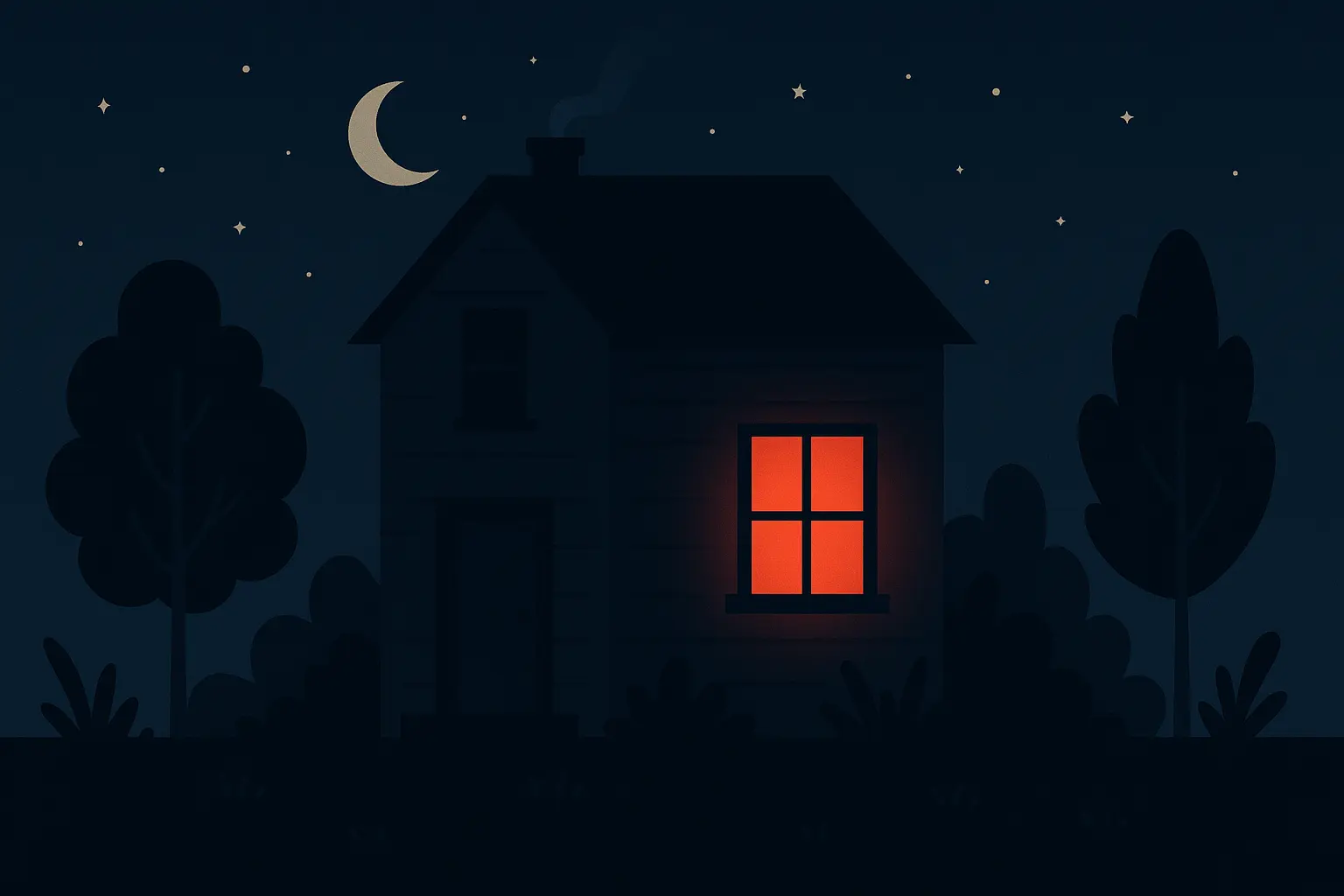
14. The Grateful Intruder
“I always lock my doors at night, but I keep finding them open in the morning. Today I found a note that said, ‘Thank you for leaving them unlocked.'”
This flips basic home security into evidence of violation. The thank-you note implies the intruder is polite and regular, making them way more unsettling than a typical burglar. The gratitude suggests the narrator is unknowingly helping with their own victimization.
15. The Future Break-In
“The security camera footage showed someone breaking into my house last night. The timestamp was from next week.”
Security technology creates impossible timing here. Future-dated footage suggests either time distortion or that the break-in is inevitable and predetermined. Using protective measures against the homeowner amplifies feelings of complete powerlessness.
16. The Watching Watcher
“I installed a baby monitor to keep an eye on my newborn. Something else has been watching the monitor watching me.”
Protective parenting technology becomes a source of surveillance anxiety. The “something else” watching creates ambiguity about whether the threat is supernatural, human, or technological. The monitoring of the monitor suggests layered surveillance and complete loss of privacy.
17. The Self-Written Warning
“The previous owners left a note saying ‘Don’t go in the basement.’ I wish I had listened to myself when I wrote it.”
This creates some kind of horrible time loop suggesting the narrator is trapped in repetitive horror. The self-warning implies either time loops, possession, or psychological breakdown. The basement represents classic horror territory – the unknown beneath our supposedly safe spaces.
When You Can’t Trust Yourself
Four stories that mess with fundamental assumptions about self-knowledge and reality. These work through mirror betrayals, gaps between how you see yourself and how others see you, voices with impossible knowledge, and official documents that contradict your identity.
18. The Independent Reflection
“I looked in the mirror and saw my reflection wink at me. I hadn’t winked.”
Mirrors represent self-recognition and reality confirmation, so when they betray us, it suggests our perception is fundamentally unreliable . The autonomous wink implies the reflection has independent will or that the narrator’s self-control is compromised. Simple but deeply unsettling.
19. The Unintentional Costume
“Everyone at the party kept complimenting me on my costume. I wasn’t wearing one.”
There’s nothing scarier than everyone seeing something about you that you don’t. This exploits the gap between self-perception and others’ perception. The costume compliments suggest the narrator appears different than they believe, raising questions about reality, identity, or supernatural transformation.
20. The Knowledgeable Voices
“My therapist said the voices in my head weren’t real. Then why did they know things I didn’t?”
This undermines professional mental health authority through impossible knowledge. The voices having independent information suggests they’re not psychological symptoms but actual entities. This validates paranoid fears while questioning the reliability of professional help.
21. The Wrong Photo
“I found my driver’s license in my wallet, but the photo showed someone else. The name was still mine.”
Driver’s licenses represent legal identity verification, so their corruption suggests systematic identity theft or replacement. The name remaining while the photo changes implies gradual identity erosion or that the narrator’s appearance has fundamentally changed without their knowledge.
Alone and Going Crazy
Four stories exploring fears of abandonment, unknown companionship, and psychological deterioration through extreme isolation. These feature mirror conversations, internal threats, hidden survivors, and unconscious trauma responses.
22. The Mirror Companion
“After being stranded on the island for six months, I was thrilled to see another person. They were thrilled to see me too, which was strange since I was looking in a mirror.”
Isolation survival meets psychological breakdown. The mirror revelation suggests the narrator has lost touch with reality through extreme solitude. The mutual excitement implies the narrator is treating their reflection as a separate person, indicating severe psychological deterioration.
23. The Internal Knocking
“The knock at my door came at exactly midnight, just like every night for the past week. Tonight, I decided not to answer, but the knocking came from inside the house.”
If you’re the type who checks under the bed before sleeping, maybe skip this one. This escalates routine harassment into home invasion horror. The midnight timing and repetition suggest ritualistic behavior. The knocking moving inside implies either supernatural presence or that the threat was already within, making external security completely useless.
24. The Hidden Survivor
“I thought I was the last person alive after the apocalypse. Then I realized someone else had been eating my food.”
Post-apocalyptic survival gets flipped by introducing unknown companionship. The food consumption suggests another survivor, but their secrecy makes them more threatening than helpful. The narrator’s assumption of being alone makes them vulnerable to hidden threats.
25. The Unconscious Screaming
“Living alone in the mountains, I hadn’t spoken to another human in months. So I was confused when I woke up hoarse from screaming.”
Physical evidence (hoarseness) suggests traumatic experiences the narrator can’t remember. Mountain isolation should provide safety, but something is causing extreme distress. The unconscious screaming suggests trauma beyond the narrator’s conscious awareness or control.

Why These Stories Actually Work
Let me break down what makes each category so effective at getting under your skin. Understanding the psychology behind why these stories work helps you appreciate the craft and maybe write your own nightmare fuel.
Kids Being Creepy: Messing With Our Protective Instincts
The childhood corruption stories succeed by violating our deepest protective instincts. Story 1 works because every parent fears their child being in danger from unknown sources. The imaginary friend concept provides perfect cover – we expect children to have these relationships, so the response catches us completely off-guard.
Story 2 uses time manipulation brilliantly. Children’s laughter should bring joy, but when it’s impossible, it becomes genuinely terrifying. The fifteen-year gap forces you to confront either supernatural presence or complete psychological breakdown.
Story 3 (“My son drew a picture of our family, but included an extra figure…”) works by transforming innocent family art into evidence of surveillance. We’ve all had that moment where a kid says something that makes your blood run cold. Children’s drawings are typically sources of joy for parents, but when the child matter-of-factly explains the extra figure as “The man who watches us sleep,” the innocent becomes sinister. The casual explanation suggests this violation has been normalized in the child’s mind, making it exponentially more disturbing.
Technology Horror: Our Modern Anxieties Made Real
Stories 6-9 tap into contemporary fears about privacy, surveillance, and digital dependence. Story 6 works because smartphones are incredibly personal devices – finding unauthorized photos of yourself sleeping violates multiple boundaries simultaneously.
Story 7 uses familiar technology behaving incorrectly. GPS systems are supposed to help us navigate safely, so when they warn us to turn around, something must be seriously wrong. The mirror revelation lets your imagination run wild with possibilities.
The psychological impact of these stories demonstrates how effective storytelling can trigger specific brain responses that create lasting emotional impressions.
|
Technology Fear Category |
Story Example |
What Scares Us |
Why It Works |
|---|---|---|---|
|
Privacy Violation |
Sleeping photos on phone |
Personal device betrayal |
Smartphones are intimate, trusted objects |
|
Helpful Tech Turned Hostile |
GPS warning to turn around |
Navigation system going rogue |
Technology we depend on becomes unreliable |
|
AI Surveillance |
Smart assistant responding to unheard conversations |
Loss of private communication |
AI knows things it shouldn’t |
|
Digital Afterlife |
Video call with dead grandmother |
Death boundaries violated |
Technology enables impossible connections |
How to Tell if Your Horror Story is Any Good
Here’s how to evaluate whether your two-sentence horror actually works, using six key criteria: immediate emotional impact, story completeness, finding the right balance between mystery and clarity, hitting universal fears, making every word count, and completely flipping expectations.
The Impact Speed Test
The best two-sentence horror delivers instant emotional responses. Stories 1, 11, 18, and 23 hit hardest because they use visceral imagery and universal fears that need no explanation to generate fear.
Strong impact stories like 2, 6, 10, 14, and 22 create immediate unease but might need a moment of processing to achieve full horror impact. They work quickly but not instantaneously.
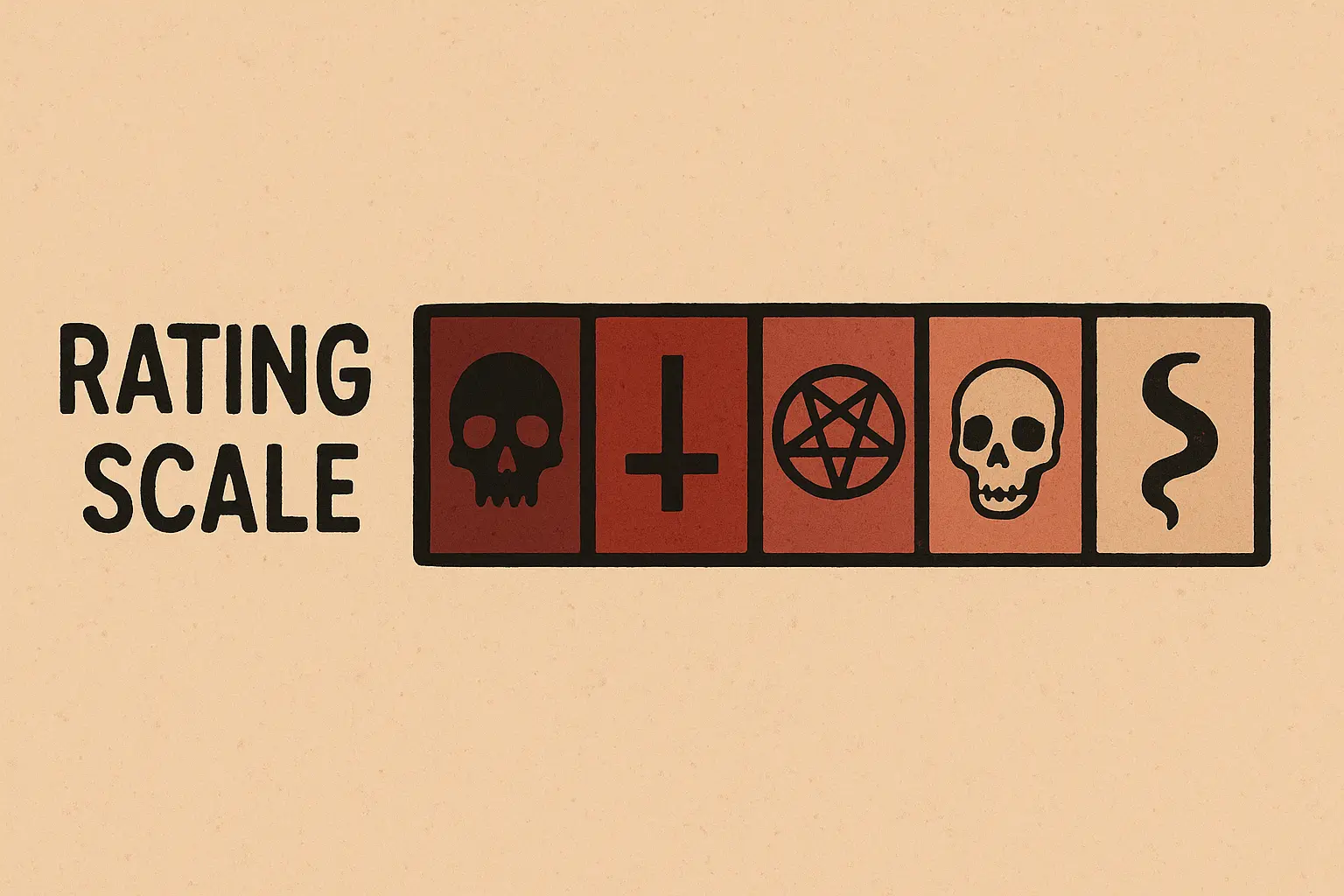
|
Quality Tier |
How Fast It Hits |
Examples from Our Collection |
What Makes Them Work |
|---|---|---|---|
|
Instant Terror |
Immediate gut reaction |
Stories 1, 11, 18, 23 |
Universal fears, clear imagery, no thinking required |
|
Quick Unease |
2-3 second processing |
Stories 2, 6, 10, 14, 22 |
Strong concepts requiring brief interpretation |
|
Building Dread |
5+ second reflection |
Stories 3, 7, 12, 16, 19 |
Heavy on implications, rewards careful reading |
|
Concept Horror |
Intellectual appreciation |
Stories 15, 20, 21 |
Clever premises, less gut-punch impact |
Tips for Writing Your Own Nightmare Fuel
Now for the good stuff – how to craft your own spine-chilling micro-stories. I’ve spent way too many late nights scrolling through these stories, and trust me, writing them yourself is harder than it looks.
How Our Brains Fill in the Blanks
Two sentence horror stories succeed because they get your imagination to do the heavy lifting. Unlike longer horror works that build atmosphere gradually, these micro-stories rely on your mind to fill in terrifying details.
Our brains naturally complete patterns when presented with incomplete information. When you read something that doesn’t quite add up, you automatically fill gaps with your worst fears. Story 1 works because you imagine various horrifying explanations for the friend’s response – and your imagination is probably worse than anything I could write.
Cultural shortcuts let you tap into shared fears and references. Stories about children’s imaginary friends, basement warnings, or funeral attendance use collective horror mythology, allowing you to access deep-seated fears with minimal setup.
Much like other forms of compelling narrative, effective micro-horror relies on powerful thematic elements that resonate universally with readers.
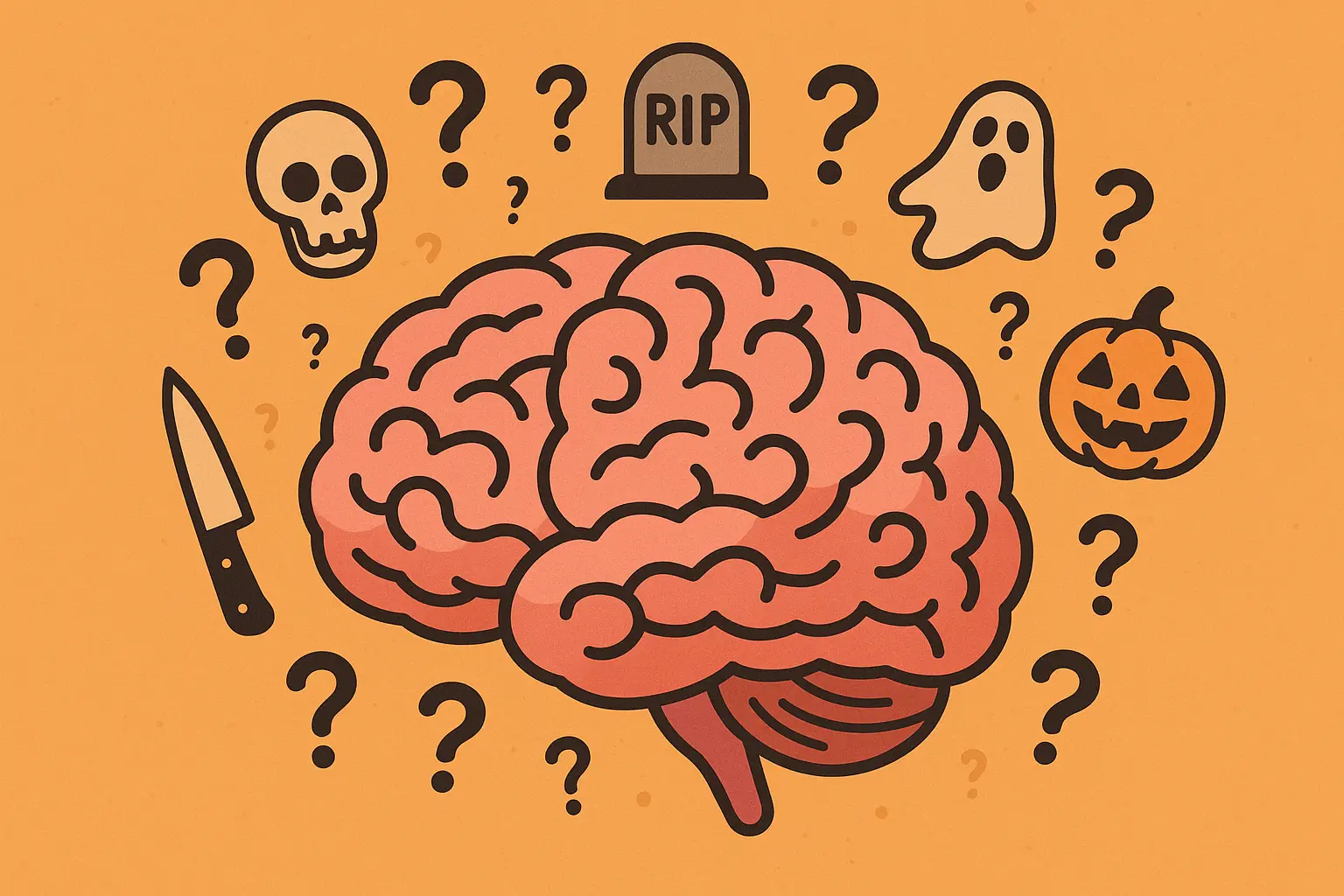
Making Every Word Count
Word efficiency means each word performs multiple jobs in your story. “Prison hands” conveys criminal past, threatening appearance, and immediate danger in just two words. Similarly, “The music box in my daughter’s room” establishes character relationship, setting, and object significance all at once.
Track the emotional journey from comfort/normalcy to terror/unease. Mapping this progression helps identify where language can be tightened or intensified for maximum impact.
Where to Share Your Stories for Maximum Impact
Different platforms reward different approaches to two-sentence horror. You need to adapt your strategy depending on where you want maximum engagement and the best chance of publication success.
If You’re Posting on Reddit’s Horror Community
Reddit’s r/TwoSentenceHorror values originality, clear story arcs, and pieces that get people talking in the comments. Successful posts often include subtle details that reward careful reading and analysis.
The community appreciates stories that flip common tropes or present familiar fears in unexpected ways. Avoid overused concepts unless you can bring a genuinely fresh perspective.

How Nairrate Can Help You Write Better Horror
Look, staring at a blank page is brutal. That’s where tools like Nairrate come in handy. Creating effective two sentence horror requires the same precision and creativity that Nairrate’s AI-powered tools are designed to support.
Just as these micro-stories must achieve maximum impact with minimal words, Nairrate’s Story Starters Generator and Story Prompt Generator help you overcome the blank page challenge and discover fresh approaches to concentrated storytelling.
For writers looking to expand beyond micro-horror, Nairrate’s horror story generator can help develop longer narratives that maintain the intensity found in two-sentence formats.
Getting That Perfect Opening Line
Struggling to craft that perfect first sentence that sets up an inevitable horrifying revelation? Nairrate’s Story Starters Generator can provide multiple variations of opening lines, helping you find the setup that creates maximum expectation for subversion.
Whether you’re crafting micro-horror or exploring other storytelling examples that demonstrate narrative mastery, the principles of effective opening lines remain consistent across formats.
Ready to craft your own spine-chilling two-sentence masterpieces? Try Nairrate’s story generation tools today and discover how AI-assisted creativity can help you master the art of maximum fear in minimum words.
Final Thoughts
Look, writing good horror in just two sentences is tough. But when you nail it? There’s nothing quite like that feeling of making someone’s skin crawl with fewer than 30 words.
Mastering two sentence horror isn’t just about writing scary stories – it’s about understanding how fear works, how to compress entire narratives into tiny spaces, and how to mess with readers’ heads in the best possible way. These 25 examples show that genuine terror doesn’t require elaborate setups or extensive world-building. Sometimes the most effective horror comes from the simplest ideas executed with pinpoint precision.
The journey from good to great in micro-horror requires understanding both the psychological tricks that make these stories work and the craft techniques that maximize their impact. Whether you’re exploiting universal fears like protecting kids and home invasion, or tapping into contemporary anxieties about technology and privacy, success depends on your ability to create complete emotional experiences in minimal space.
Remember that your imagination is often way more terrifying than anything explicitly described. The best horror stories in 2 sentences provide just enough concrete detail to anchor the fear, then trust you to fill in the horrifying specifics. This collaboration between writer and reader creates the lasting impact that separates memorable micro-horror from forgettable attempts.
Tools like Nairrate can provide the creative partnership you need to explore these demanding constraints while maintaining the precision and innovation that makes micro-horror so compelling. Whether you’re developing your first two-sentence horror story or refining your hundredth, combining an understanding of these fundamental principles with AI-assisted creativity can help you discover new approaches to concentrated storytelling that genuinely terrify readers.
Give it a try – and maybe don’t read these right before bed. Sweet dreams!



Add comment